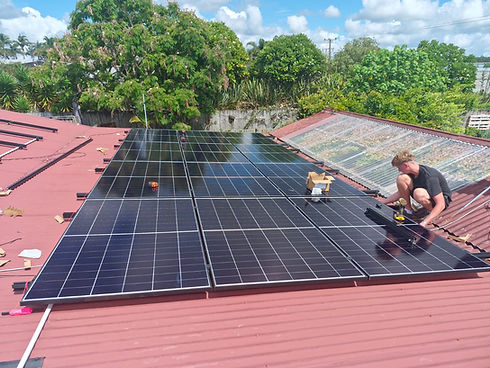SOLAR INSTALLS

Are you tired of receiving those increasing power bills from your electricity retailer?
Northland is considered the most expensive region in New Zealand when customers are hooked up to the grid.
Have you considered installing solar in your home?
Now is the time to change to solar and Max Bergman and his team will ensure it be a smooth and stressfree process.
We are the solar systems specialists offering solar solutions to customers from the Far North down to as far as Whangarei.
What are the benefits of Solar Energy?
-
Renewable Energy
-
Reduced power bill
-
Energy independence
-
Increased home resale value
-
Long term savings
-
Versatility
-
Environmental benefits
-
Emission-free and noise free, on-site electricity generation
-
Works anywhere there is direct sunlight available
-
Long term solution
-
Durable and low expected maintenance throughout the systems lifespan
What is a Grid-Tied Solar System?
A grid-tied (connected) solar system is made up of three things.
-
Solar panels – These are usually positioned on the rooftop (can be mounted on the ground) in a way that the maximum sunlight falls on them throughout the day
-
Invertor – This transforms the solar energy into usable household power
-
There is also an array of supporting components such as wiring, meters etc.
A grid tied system is linked to the electrical grid. With a grid-tied system you can feed excess solar energy back into the grid. This is sold to the electrical retailer when household devices are inactive. Your home can still use the constantly available grid power when the solar system isn’t generating energy like at night when the panels cannot harness the power from the sun.


What is a Hybrid System?
A Hybrid System is a grid-tied System but has a battery backup in the event of a power failure.
A Hybrid system consists of:
-
Solar panels
-
invertor
-
Array of supporting components
-
A battery
Max Bergman Electrical recommends the Cyngi Hybrid Solar System.
Features of this system include:
-
All-in-One System - incorporating the invertor and the battery
-
All new sleek design
-
Can be mounted on the wall
-
Modified so that additional batteries can be added at a later date.
What is an Off-grid Solar System?
The difference between a Grid-Tied Solar System is the off-grid system uses batteries to store solar power. The excess power is not sold back to the grid.
This is standalone solar power. It is ideal for those who are unable to connect to a local electricity network or for those that face high grid connection costs. It is an option for those who want to be completely power dependent.
How does an Off-grid System work?
An Off-grid System typically has the following components:
-
Solar Panels
-
Invertor
-
Charge Controller
-
Batteries
-
Backup Generator (Diesel)
Once the electricity is created by the solar panels, it runs through a charge controller. This controls the voltage going into the batteries whilst protecting them. When power is required by the house it is drawn from the batteries through an invertor. This electricity now can be used by most appliances in the house. 12v appliances can be used when power is taken off before the battery.
A backup diesel generator can be added to the system when you need to use more power.


What is the process of a Solar Installation?
1// Consultation
Max will come to you, evaluate your home’s solar potential. Discuss your electricity bill and check your roof suitability.
2// Planning
Max will offer suggestions and outline the solar process. He will quote to install your new solar system.
3// Installation
Max Bergman’s team will fix and wire the solar panels to the roof, install the invertor, a battery if requested and hook it up to a monitoring system (if grid-tied). The system is tested.
4// Grid-Tied Connection
The lines network installer will replace your meter with an import/export meter to gauge any credit you might be owed for feeding power back to the grid.
5// Installation Completion
The team will explain the operation and the monitoring of the system.
Max Bergman will organize all the necessary paperwork required for the installation including Network approval, issue of Compliance Certificates, Testing and inspections required.




